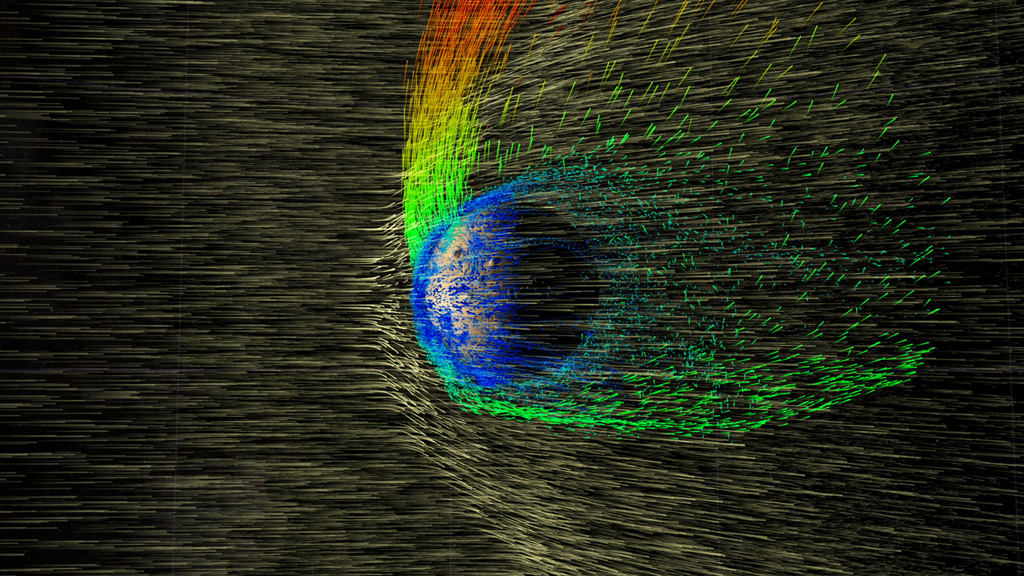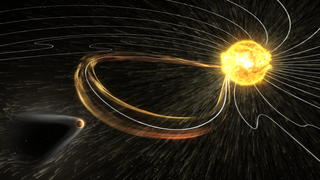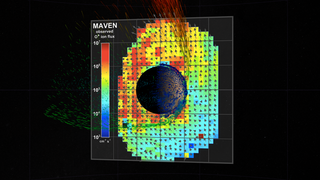Planets and Moons
ID: 12046

Mars today is a cold, barren desert, but scientists think it was once a warm and wet planet. The change may have been caused by the loss of an early atmosphere driven into space by the sun’s solar wind. Unlike Earth, Mars lacks a global magnetic field that deflects the stream of charged particles continuously blowing off the sun. Instead, the solar wind crashes into the planet’s upper atmosphere, stripping away electrically charged gas atoms, called ions. NASA’s MAVEN spacecraft, which entered orbit around Mars in September 2014, measures the speed and direction of escaping ions to observe the process of how Mars’ atmosphere is eroded by the solar wind. Measurements show the rate of ion loss increases during periods of extreme solar activity, suggesting a younger and more active sun billions of years ago likely played a significant role in transforming the Red Planet. Watch the video for a simulation showing the process of Mars’ atmospheric erosion.



Stripping the Martian Atmosphere




Related Stories
For More Information
Story Credits
Lead Visualizer/Animator:
Greg Shirah (NASA/GSFC)
Visualizers/Animators:
Horace Mitchell (NASA/GSFC)
Brian Monroe (USRA)
Producer:
Dan Gallagher (USRA)
Scientists:
Bruce Jakosky (LASP)
Xiaohua Fang (LASP)
Yaxue Dong (LASP)
Yingjuan Ma (UCLA)
Lead Writer:
Dan Gallagher (USRA)
Greg Shirah (NASA/GSFC)
Visualizers/Animators:
Horace Mitchell (NASA/GSFC)
Brian Monroe (USRA)
Producer:
Dan Gallagher (USRA)
Scientists:
Bruce Jakosky (LASP)
Xiaohua Fang (LASP)
Yaxue Dong (LASP)
Yingjuan Ma (UCLA)
Lead Writer:
Dan Gallagher (USRA)
Please give credit for this item to:
NASA's Scientific Visualization Studio and the MAVEN Science Team
NASA's Scientific Visualization Studio and the MAVEN Science Team
Short URL to share this page:
https://svs.gsfc.nasa.gov/12046
Keywords:
SVS >> Hyperwall
SVS >> App
NASA Science >> Planets and Moons
https://svs.gsfc.nasa.gov/12046
Keywords:
SVS >> Hyperwall
SVS >> App
NASA Science >> Planets and Moons









